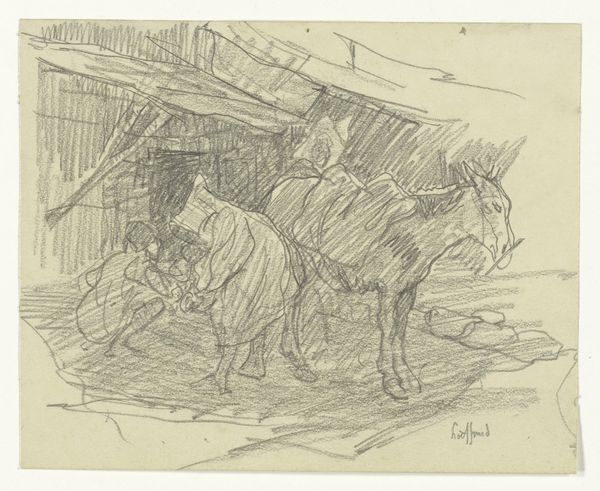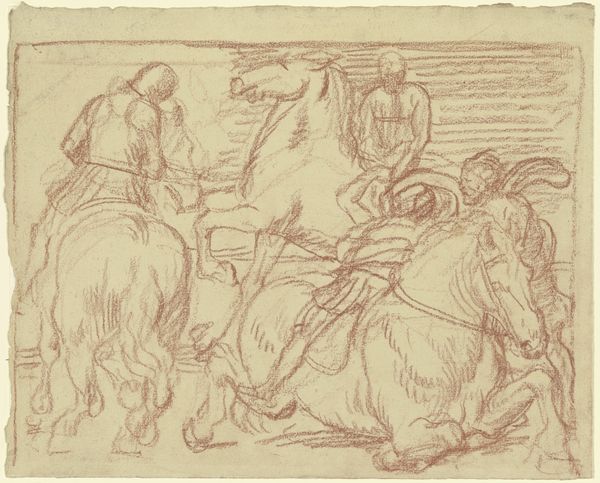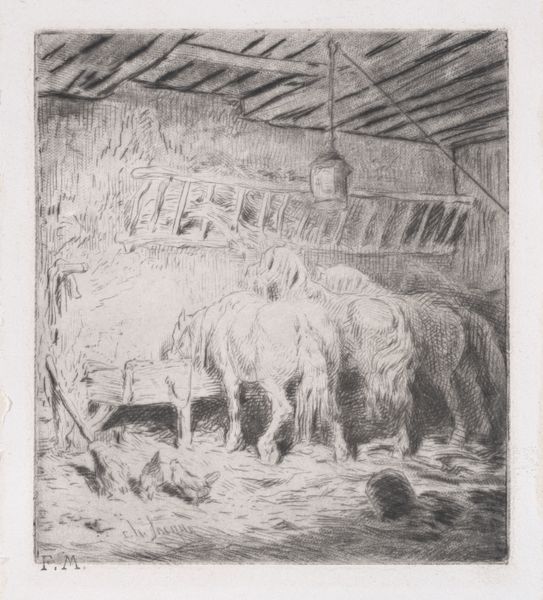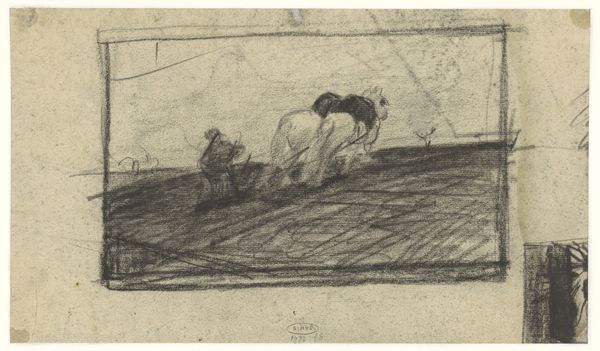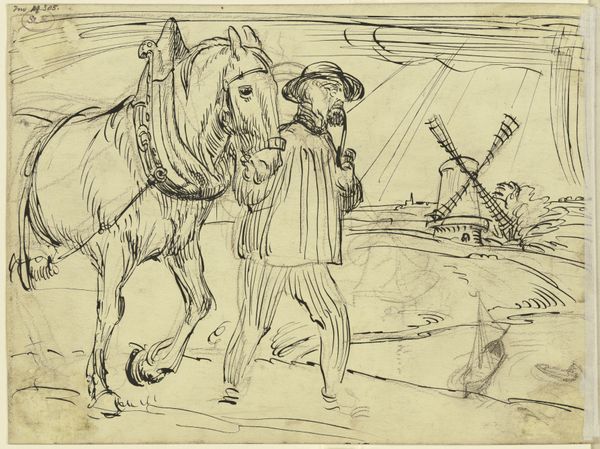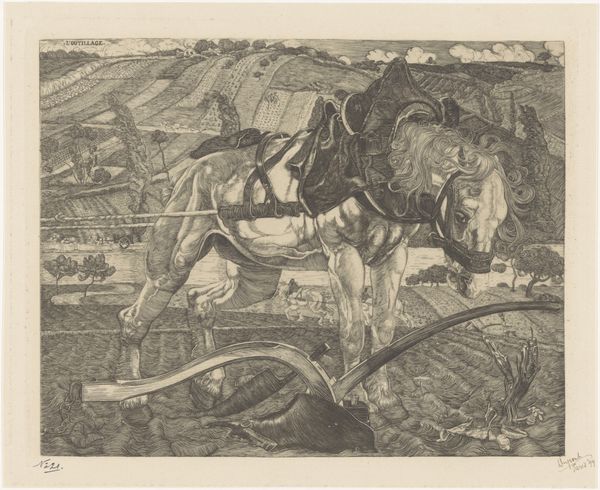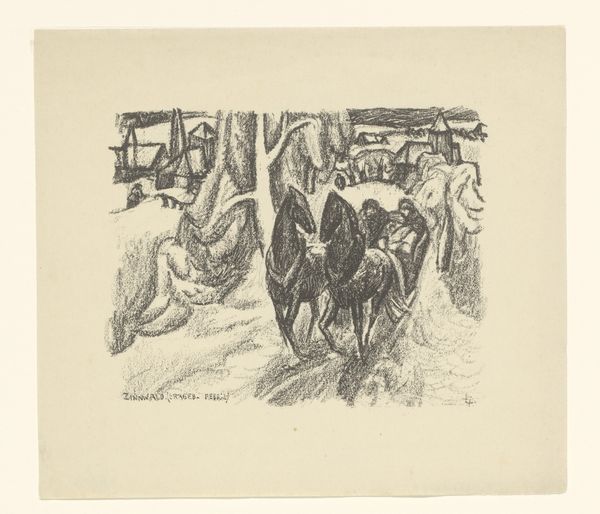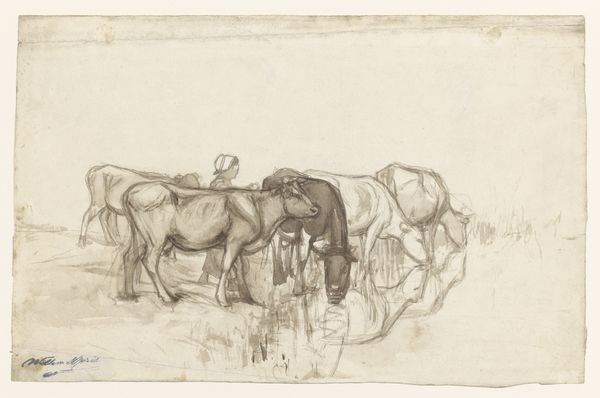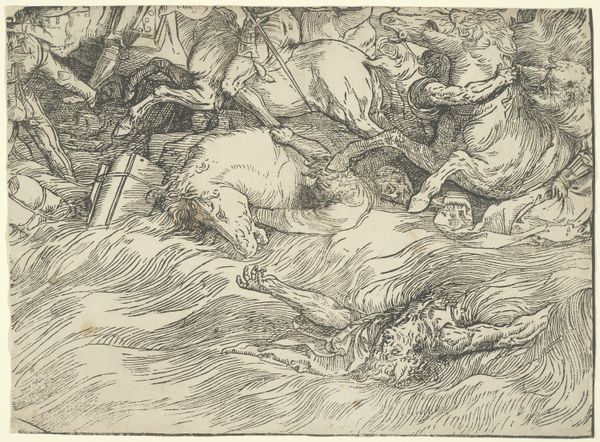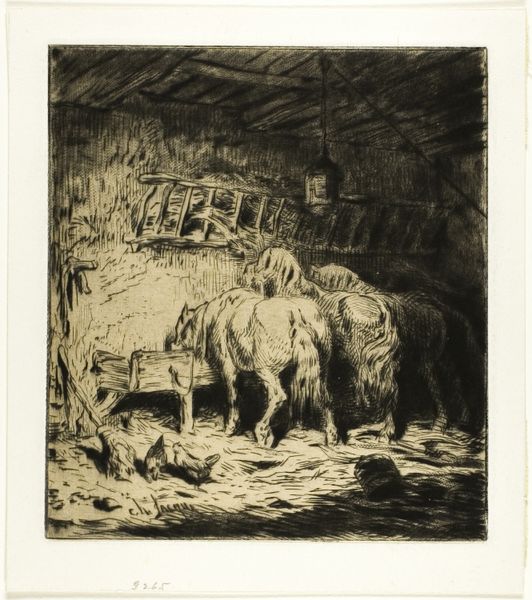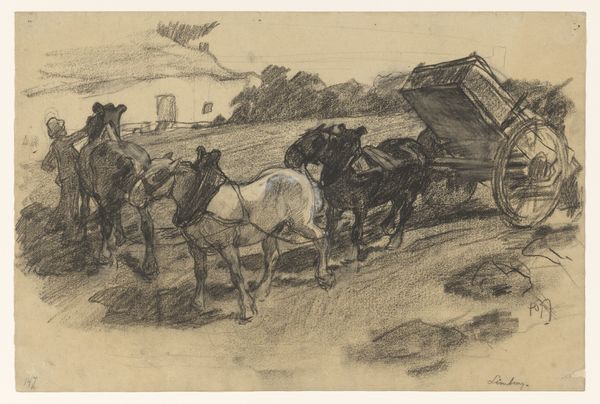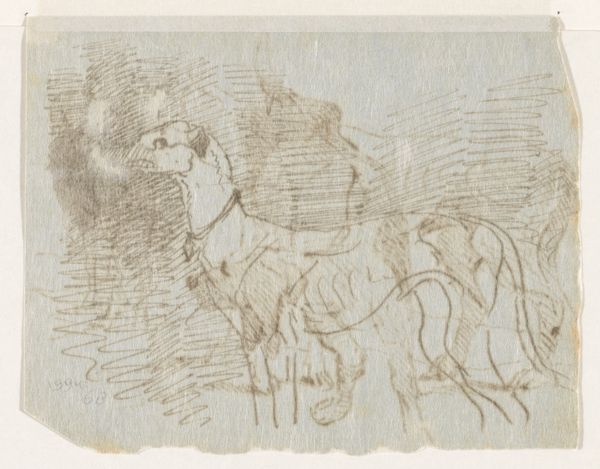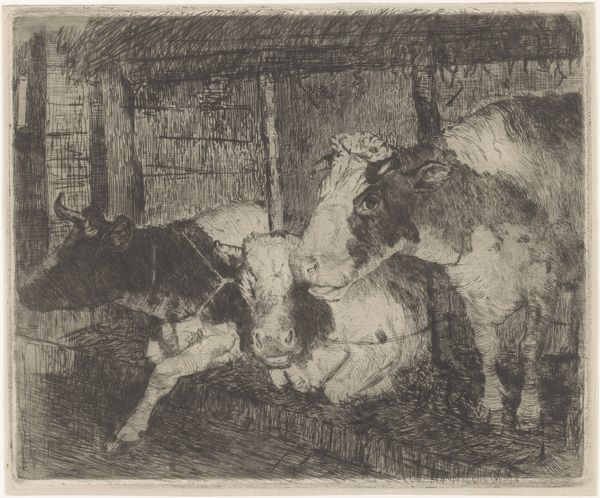
drawing, pencil
#
drawing
#
landscape
#
figuration
#
pencil
#
orientalism
#
realism
Dimensions: height 105 mm, width 171 mm
Copyright: Rijks Museum: Open Domain
Curator: This is Jac van Looij's "Muilezels en ezels op de Grote Markt te Tanger," created in 1902. The work is a pencil drawing depicting mules and donkeys at the Grand Socco in Tangier, Morocco. Editor: My first impression is a feeling of bustling activity, despite the subdued palette. There's a clear sense of movement, but also a stillness to the scene. I think it's the animals, the contrast between their muscular forms and their weary poses gives an odd mixture of action and quiet. Curator: It's fascinating how van Looij captures that atmosphere of a market square so vividly with such a simple medium. The sketching style lends itself well to conveying the immediacy of the scene. We need to remember, there's a deep connection here between artistic production and European colonial narratives in Morocco at this time. Editor: Absolutely. Orientalism is writ large here. We must address the fact that such depictions often served to exoticize and "other" cultures, simplifying them for a European audience, thereby solidifying colonial power structures. It begs the question, how much does the reality of daily life in Tangier matter, versus the artist's projected interpretation of it? Curator: I see your point, and it’s well-taken. But looking at the technique, the layered pencil strokes create depth, suggesting a multitude of people and animals crammed into the space. There’s almost an attempt to realistically convey a real event here, rather than manufacture an exotic image. But, undeniably, the setting itself invites that Orientalist gaze, framing Tangier as an ‘other’ world. Editor: Even with representational fidelity, the choice to focus on working animals, rather than people, has implications. Does it subtly reinforce notions of non-European lands as purely functional, devoid of individual complexities? What is included and, just as importantly, what's omitted from the visual narrative. Curator: Those are astute observations, and something that we should be highlighting for all of our works in this particular colonial historical moment. And on close inspection we can see figures amongst the donkeys, the composition as a whole allows us to be immersed within that setting as intended by the artist. The act of observing becomes an act of interpretation that requires nuance. Editor: It highlights how crucial it is to approach art like this with a critical eye, constantly questioning the power dynamics inherent in representation and perception. Thanks for this new framework of engaging and dissecting this piece.
Comments
No comments
Be the first to comment and join the conversation on the ultimate creative platform.
